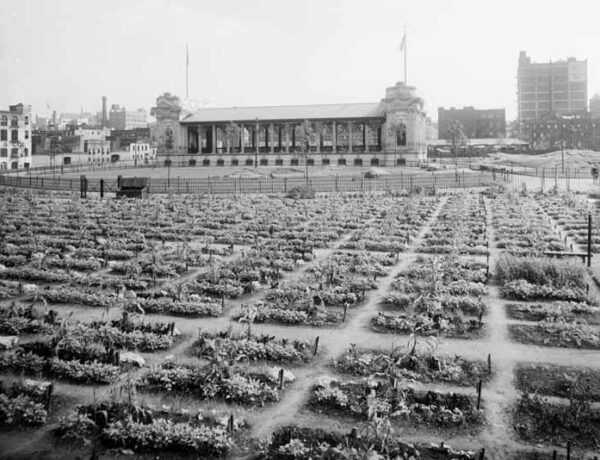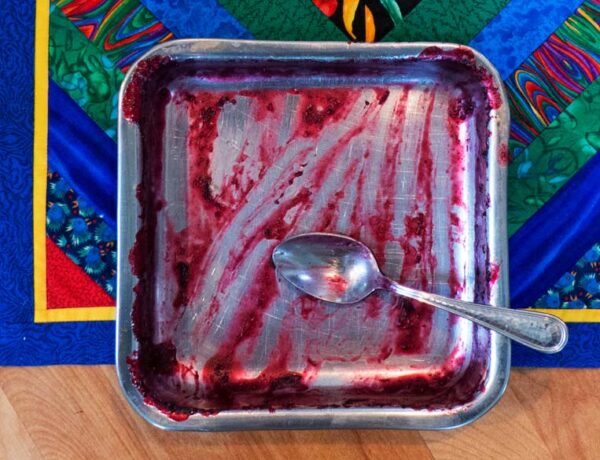On a recent Saturday, when the sun popped out from the gray, shredded clouds, I was standing in the greenhouse admiring the yellow marigolds. Looking more like tennis balls than flowers, marigolds are my “silent sentries” in that each year I put marigolds to work. Their job: keep aphids at bay. At least, that’s the goal.
Turns out, marigolds have long been associated with the sun.
[perfectpullquote align=”full” bordertop=”false” cite=”” link=”” color=”” class=”” size=””]”The marigold abroad her leaves doth spread, because the sun and her power is the same,” wrote poet Henry Constable in a 1592 sonnet[/perfectpullquote]
African marigolds, which are actually native to Mexico and Central America, were sacred to the Aztecs, who used them as medicine and as a ceremonial offering to the sun gods. Marigolds are still called “the herb of the sun” because of this.
Summer for us islanders is also synonymous with salmonberries. (Aren’t you glad to see those ripe, red berries?) You might recall that last summer was a letdown as far as berries go. But 2019 was a banner harvest. Salmonberry-rhubarb jam, salmonberry pie, even salmonberry-horseradish sauce for halibut. Okay, I made that one up.
Still, salmonberry plants generate mixed emotions. Some people scowl at them like the Kudzu of the North in their efforts to clear their yards for a better purpose. And others want to propagate them, no matter what.
This reminds me of a conversation I had years ago with a lady who lived in Utah, and wanted to grow salmonberries in the worst way…
I dove into research mode. Did you know that salmonberries are members of the rose family? They are distributed up and down the West Coast, from the Aleutians to northern California. But would they live in the arid lands of Utah?
In my searching, I discovered a few ways to propagate muck-a-muck, another name for salmonberries, according to Janice Schofield, author of “Discovering Wild Plants.”
How to propagate salmonberries
Taking Cuttings
One source suggested taking cuttings, 4 to 8 inches long, in the fall as the plant goes dormant. Push the cuttings into potting soil or moist sand with two buds below the surface of the soil and two buds above. Keep the soil moist. Hopefully, by spring, root development will have begun. Don’t do anything at this point. Just leave the cuttings in place until fall when they can be set out into the garden.
Taking cuttings in the fall may or may not work, depending on how cold our winter ends up. My thought would be to root cuttings in fall and late winter, much like you’d do with red and black currants.
Layering salmonberries
This method follows Mother Nature proven technique of spreading salmonberries hither and yon. You’ll see what I mean.
Layering is one of the easiest methods of propagating new plants. Unlike cuttings, which have to survive on their own, layered shoots are “encouraged” to form roots while still attached to the parent plant.
Layering is accomplished by bending a flexible branch down to the ground so that the tip and a few inches lay on top of the soil. Then the branch is secured in place on the ground with U-shaped pieces of wire (think giant hairpins) pushed into the soil so the tip of the branch remains in contact with the soil.
You can also place a branch, rock, or piece of wood across the branch to secure it in place. When roots have developed (it may take a few months or even a year), trim off the rooted section and plant in a pot.
[perfectpullquote align=”full” bordertop=”false” cite=”” link=”” color=”” class=”” size=””]Plants that respond well to layering include gooseberry, lilac, rhododendron, rose, and currants.[/perfectpullquote]
Seed from salmonberries
The method of propagating salmonberries by seeds is similar to how you’d collect tomato seeds:
- Collect ripe berries and place them in a sieve.
- Squish, not crush, them by hand until the berries are pulverized.
- Put the pulp into a jar and fill it with water.
- Allow the mixture to settle and then pour off the water. Viable (healthy) seeds remain in the bottom of the jar.
Mystery: When is a berry not a berry?
Salmonberries are considered true berries. But that’s not true for all common berries.
Did you get that?
Blueberries, for example, are true berries, because they are single fruits derived from the plant’s ovaries, according to Harold McGee, author of On Food and Cooking: The Science and Lore of the Kitchen.
Strawberries on the other hand, are not true berries. Really?
They are multiple fruits that develop from many ovaries set in the same flower “receptacle.” As for salmonberries (and raspberries), each little segment is a complete fruit.
To celebrate salmonberry’s trueness, here’s one of my favorite recipes: Fresh, salmonberry pie to:
How to Make Fresh Salmonberry Pie
Step 1: The crust:
Bake a 9-inch pie shell and cool to room temperature. Or make a no-bake crust from ginger snaps or graham crackers.
Step 2: The filling:
- In a saucepan, mix 1/4 cup sugar and 1-1/2 tablespoons cornstarch, and a dash of salt.
- Slowly stir in 1/4 cup salmonberry juice. Mix well.
- Add 1-1/4 cup more juice and stir. Bring to a boil over medium heat, stirring constantly until clear and starting to thicken.
- Remove from heat and stir in 1 teaspoon lemon juice.
- Arrange fresh berries in the pie shell and top with warm glaze.
- Chill for at least 1 hour. Serve with dairy-free ice cream or yogurt.
Yum.
Back to marigolds…
Did you know that for years, farmers included the open-pollinated African marigold ‘Crackerjack’ in chicken feed to make egg yolks a darker yellow?
And finally, in the late 1960s, Burpee president David Burpee launched an energetic campaign to have marigolds named the national flower, but in the end, the rose won out.
Have my silent sentries done their job this summer? For the most part, yes. Though I can’t seem to keep aphids off my pepper plants. They’re like aphid magnets. Any ideas?
Marion’s garden calendar:
- Keep hanging baskets and containers evenly watered. At this point in the season, they appreciate nourishment in the form of a compost-kelp tea. Turn them occasionally to encourage even growth.
- Sow another crop of mixed salad greens, cress, spinach.
- After cutting the grass, mix clippings with dried leaves and kelp to begin a compost pile.
- Enjoy a few quiet, calm moments in the garden.
- When bringing cut flowers into the house, check for aphids!
That’s it for this week. Thanks for stopping by. You’re great!
Cheers,

PS Hey! Gardening doesn’t have to be hard! Cut your garden maintenance in half, help your plants survive a drought, and make weeds easier to pull. After 35 years of gardening, I have learned one important thing: Compost is the answer to all your problems. Want to know how to make compost in just 6 weeks? Begin by taking this composting assessment. And hey, you might enjoy my Joy of Composting Facebook page. If you’d like to drop me a note, here’s my email address: marion (at) marionowenalaska.com.





No Comments